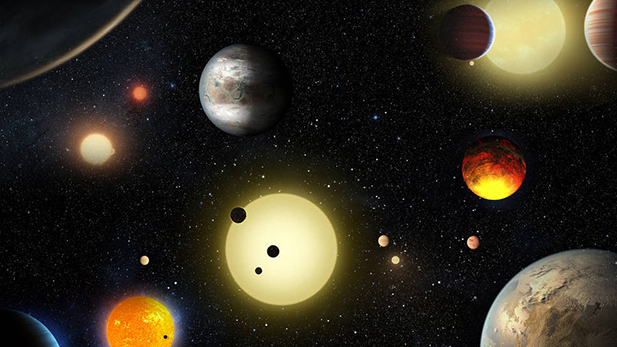 An artist's concept of select planetary discoveries made by NASA's Kepler space telescope.
An artist's concept of select planetary discoveries made by NASA's Kepler space telescope.A team of astronomers led by the University of Arizona has confirmed the existence of more than 100 planets outside our solar system. The original discovery came via NASA’s Kepler spacecraft’s K2 space mission.
Scientists said at least four of the planets may have rocky features similar to Earth’s and are orbiting a star less than half the size of our sun.
Ian Crossfield, a scientist at the UA’s Lunar and Planetary Laboratory, said the findings will open the door for further study of the newly discovered bodies, all more than 100 light years from Earth.
“This is by far the largest haul of new planets discovered and announced by K2 since the mission was repurposed,” Crossfield said. “We’re finding lots of exciting systems orbiting bright stars and that means the future is bright for these sorts of missions going on in the future."
These planets are worth studying, he said, “because we might be interested in knowing how solar systems and planets like our own formed, so putting our own home here in the cosmos in better context in terms of understanding our place in the universe.”
Crossfield led the international team that confirmed the planets’ existence using telescopes on Earth. He said astronomers hope to employ the James Webb Space Telescope in continuing their examination of this group of planets. That telescope is scheduled to launch in late 2018.

By submitting your comments, you hereby give AZPM the right to post your comments and potentially use them in any other form of media operated by this institution.